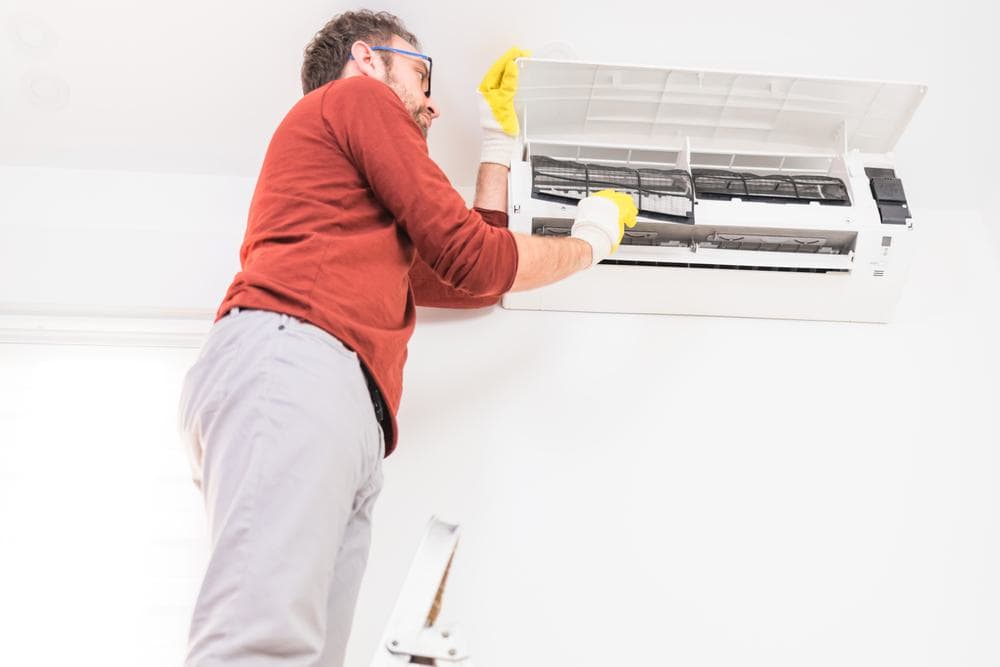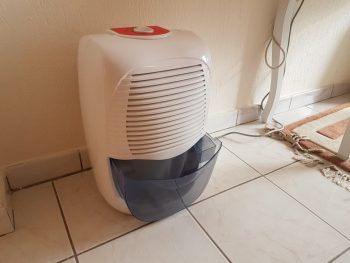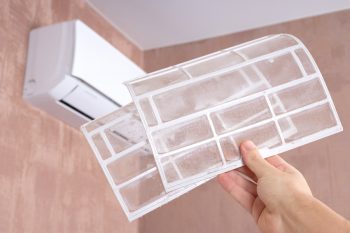
Air conditioners are essential for maintaining a comfortable environment in your home or office, especially during hot summer months. However, like any other appliance, they require regular maintenance to function optimally. One of the key maintenance tasks is draining the air conditioner, which helps to remove excess moisture produced during the cooling process. In this in-depth guide, we’ll explain how to drain an air conditioner, why it’s necessary, and what tools you’ll need. We’ll also outline the common mistakes to avoid and provide tips for regular maintenance.
To drain an air conditioner, first, turn off the power to the unit. Locate the drainage hole or port and place a bucket or container beneath it to collect the water. Remove the drainage plug or cap and allow the water to drain into the container. If necessary, clean the drain line using distilled vinegar, let it sit for 30 minutes to an hour, then flush it with water. Finally, replace the drainage plug or cap and turn the power back on. Always remember to take safety precautions and consult with a professional if unsure.
Why Drain an Air Conditioner?
Air conditioners not only cool the air but also dehumidify it, causing condensation to form on the evaporator coil. This condensation needs to be removed to prevent potential damage to the unit, ductwork, and insulation, and to maintain a comfortable indoor environment. The condensate drain line is responsible for releasing this built-up moisture and pushing it away from the AC unit. If the drain line becomes clogged or doesn’t function properly, water can overflow and leak out of the unit, potentially causing water damage to your home and promoting mold growth. Additionally, stagnant water in the drain pan can become a breeding ground for mold and bacteria. So, draining an air conditioner is essential for maintaining the proper functioning of the system, preventing water damage, and ensuring a comfortable and healthy indoor environment.
Signs Your Air Conditioner Needs Draining
Here are some signs to look out for that indicate your air conditioner needs draining:
- A pool of water inside your home or standing water around your AC unit.
- Sudden system shutdown, especially if your unit has a drip pan sensor.
- Visual signs of bacterial growth around the drain pan area.
- Visibly wet walls or dampness on walls.
- Musty odors, indicating mold or mildew growth.
- Visible rust stains or discoloration on walls.
- Water collected in the AC drain pan.
- Flooding or puddles near the indoor unit.
If you notice any of these signs, it’s essential to address the issue promptly to prevent further damage to your property and maintain optimal functionality for your air conditioning system.
Tools Needed to Drain an Air Conditioner
To effectively drain an air conditioner, the following tools are required:
- A container or bucket to collect the drained water.
- A hose or tubing to direct the water flow from the air conditioner to the container.
- A stool or platform to elevate the air conditioner for easier drainage (if necessary).
- Aluminum foil or a similar material to create a chute for directing water flow.
- Tape to secure the chute to the air conditioner’s drainage spout.
If you need to clean a clogged air conditioner drain line, you will need additional tools:
- A funnel.
- A wet/dry vacuum.
- Distilled vinegar or bleach.
- Rags or towels.
- A thin-wire brush.
- Duct tape.
- Rubber gloves.
How to Drain an Air Conditioner: A Step-by-Step Guide
- Turn off the air conditioner: Always turn off the power to the unit before performing any maintenance tasks. This can be done by turning off the thermostat and the breaker that controls the AC on your home’s main electrical panel.
- Locate the drainage hole or port: Depending on the type of air conditioner you have, the drainage hole or port may be located in different places.
- Prepare a drainage container: Place a bucket or container beneath the drainage hole or port to collect the water that will flow out during the draining process.
- Remove the drainage plug or cap: For portable AC units, remove the drainage plug. For window AC units, insert the drain pipe into the drain hole. For central AC systems, remove the cap at the top of the drain and inspect for blockage.
- Allow the water to drain: Let the water flow out of the unit and into the container. This may take some time, depending on the amount of water in the unit.
- Clean the drain line (optional): To prevent future clogs, you can clean the drain line using distilled vinegar. Pour ¼ cup of distilled vinegar into the drain line and let it sit for 30 minutes to an hour before flushing it with water.
- Reassemble the unit: Once the water has drained and the drain line has been cleaned (if applicable), reassemble the unit by replacing the drainage plug or cap and turning the power back on.
Precautions to Take When Draining an Air Conditioner
Safety is paramount when performing any maintenance task. Here are some precautions you should take when draining an air conditioner:
- Always turn off the unit and unplug it from the power source.
- Allow the unit to cool down before you start working on it.
- Wear gloves and safety goggles.
- Use a sturdy and reliable container to collect the drain water.
- Never force open any parts of the unit.
- If you’re unsure about any step, consult with a professional.
Common Mistakes to Avoid When Draining an Air Conditioner
Avoid these common mistakes to ensure a successful and safe draining process:
- Not turning off the power before starting the process.
- Ignoring regular maintenance and cleaning.
- Not checking for leaks or holes in the tubing.
- Not cleaning the drain pan.
- Attempting to fix the issue without professional assistance.
Conclusion
Draining an air conditioner is a critical maintenance task that ensures the unit’s optimal performance and longevity. It prevents water damage to your home and promotes a healthier indoor environment. By following this comprehensive guide, you’ll be able to drain your air conditioner safely and effectively. Remember, if you’re ever doubtful or uncomfortable performing these tasks, it’s best to consult with a professional. Regular maintenance, including draining and cleaning, will help ensure your air conditioner serves you well for years to come.












